During the last 18 months of the period, WG began making real progress toward controlling the yield and size of the clay hot top. The laboratory was an invaluable tool in testing the clay before using it. Crowe developed methods to drill and test the deposits foot by foot before mining the clay. We started to learn what clay would work and what clay would not, as far as making the product without breakage and the correct size. Luck was also with us when, after drilling hundreds of potential clay mines in the area, we discovered large deposits of clay west of North Industry which, when tested, met our standards very well.
Another big leap forward in size control came when we started making draw trails from pieces of the extruded materials each day the hot tops were produced. These draw trials followed the hot tops through the dryer and into the kiln. When the kiln temperature was 100 degrees below the normal finishing temperature, on of the draw trials was removed and measured. We set the extrusion dies for process shrinkage of 5.3 percent. The temperature was gradually increased until the drawn trial measured 5.2 percent shrinkage. The kiln firing was stopped when the shrinkage was correct rather than the past practice of stopping at a certain temperature. Some training time was required. Typically, Jim Crowe or I would be present as the kiln reached the finish temperature. When the gauge fit the draw trial, we would say, “It’s done. Start cooling.” The fireman would say, “No, not done.” We would say, “Oh yes, all done.” The fireman would shake his head, but three days later when the kiln was emptied, he would be present to dee the product and usually pleasantly surprised that most of the ware went into A grade rather than the dump. The hot top product was well on its way to being a real ‘money machine.’
Ed Stedman paid me a visit at the Waynesburg plant. He reported that we had been consistent in making on-time deliveries of hot tops to the customers. In addition to quality improvements, daily inventories and production planning had be in effect for some time. Ed confided that he could produce new customers at will, but had never revealed this as in the past, we had not been able to take care of the ones we had. I indicated we were ready for more business and he offed to provide prints of products for potential new customers, so we could pick the shapes where we felt we could do the best job. Sales and profits increased at an impressive rate.
Author Archives: Colby
Hot Tops Become Profitable
John Whitacre Jr’s Story Continues
John’s story continues:
I worked on the maintenance crew as an hourly worker at WG summers in high school and college. Before I was 18 years old, my time was carried on the farm payroll to conform to child labor laws. One summer Paul Brown, football coach at Massillon High School, was touring the plant with my father, who introduced me. Paul Brown said to my father, “John, he’s a little young for this, isn’t he?”
The maintenance chief then and for decades before and after was Roy “Monk” Moore. Roy was an electrical and mechanical wizard. He did all high-voltage electrical repairs himself and supervised mechanical and electrical repairs and installations at Waynesburg and Magnolia. My father would regularly present Roy with challenging problems, such as designing control circuits for the automatic hot top machine. Roy would usually say, “JB, give me a few nights to think about it and I will get back to you.” Invariably, the solution was found and successfully applied. He have had some fine maintenance people at WG, such as Clem Burwell, Jim Crowe and Ralph Foster, but in my view, none came close to Roy Moore in breadth of knowledge and skill.
Dan also spent his high school years at Western Reserve Academy and then went into the Navy for a year. He went to Kent State and received a degree in architecture. He worked for a while in the WG laboratory, along with Jim Crowe. Later, Dan went into face brick sales and eventually became general manager of the face brick operation.
Dan, Jim Crowe and I were single and lived together at the Hunt Club for about a year. Although we played hard, WG had a pretty good deal in three fellows who would go anywhere day or night, any day of the week, to work to improve operations for WG.
The Korean Conflict Years
John B. Jr. spent his high school years at Western Reserve Academy, graduating in 1944. On July 1, 1944, I entered the Navy and was assigned to Notre Dame as part of the V-12 officers training program. After V-J day, August 1945, I resigned from the program and was sent out on a destroyer, the USS Shannon, for six months’ service along the Atlantic coast before being discharged July 1, 1946. That fall, I entered Case Tech as a sophomore and graduated in 1949 with a degree in engineering administration, primarily mechanical engineering, with some business courses. Primarily encouraged by my mother, I arranged for a job at Union Metal in Canton. When I told my father, JB and Art, they urged me to reconsider and come to WG, which did need help. The incentive offered was eventual control of the company. I accepted and went to work. There was plenty of work.
Although the demand for hot tops and face brick was strong, decent earnings just were not happening. In the words of Art Estep, “We will have several nice, profitable months and then the yield of good hot tops will drop below 50 percent for about six weeks and the losses will cancel out the prior month’s profits. The problems are cracked ware or hot tops that are unusable because they won’t fit in the ingot mods.” Inventories els were not updated on a daily basis, so customer shipments were missed because we did not have the product. The customers all had two or three suppliers, so they could order from someone else if we missed a delivery.
I worked on these problems for a year and then was drafted into the Army for service in the Korean War. Jim Crowe, from our laboratory staff, and George Skaggs, Magnolia plant manager, were called back into the Army as reserves about the same time. My father had encouraged me to get more education and I received notice I had been admitted to the Harvard Business School the same week I reported to Fort Knox for training. Most Navy veterans were exempt from Korean service unless called up in the naval reserve. I did not stay in the reserve and the Carroll County draft board chose me before some of the young farmers to fill their quota of draftees. The experience worked out pretty well. I had an engineering degree and after training, was assigned to teach heavy equipment maintenance at the Engineer Center at Fort Belvoir, VA. The practical experience of teaching maintenance of power shovels and bulldozers was invaluable when dealing with the wide variety of heavy equipment involved in heavy clay product manufacturing. In the summer of 1952, I was discharged from the Army and returned to WG, along with Jim Crowe and George Skaggs.
JB, DD and Art Estep
JB worked tirelessly during this period, supervising plant and mine operations, as well as labor relations and union contract negotiations. With so many men in the armed services, quality supervisors were in short supply during the war years and the demands on JB’s time were enormous. In 1943, he married Mary Landman and the quality of his life improved substantially. They lived in the Whitacre mansion and did a fine job of restoring the house, which had been neglected since JJ’s death. Mary Whitacre was an avid and able golfer and renewed JB’s interest in the sport. After the war, they started spending winters in Dunedin, FL. JB continued his interest in beagle hounds.
DD returned from service as a naval officer and went to work for WG. He managed all sales, steel plant refractories and face brick. DD developed a distribution system for the face brick business, which was a new business for WG. In the U.S., five companies, including WG, produced hot tops. DD organized them into a research group, which at different times sponsored projects to improve the product at Ohio State, Penn State and Case Tech. DD championed converting part of the garage at the main office into a testing laboratory for raw materials and finished products. He was the primary mentor and decision maker for day-to-day matters after the war. The Waynesburg Fox Hunt was not reactive after World War II.
Art Estep continued as secretary-treasurer. He was willing to give advice and able to relate many events from the past as examples of successful or unsuccessful decisions. He was a good influence on all of us, including his brothers-in-law, when we took ourselves too seriously. Since the 1938 common stock agreement, Art usually sided with my father in important decisions. This was a severe frustration to DD, Dan and me. When we championed new products or new ways of doing the current work better, we were consistently turned down if spending money was involved.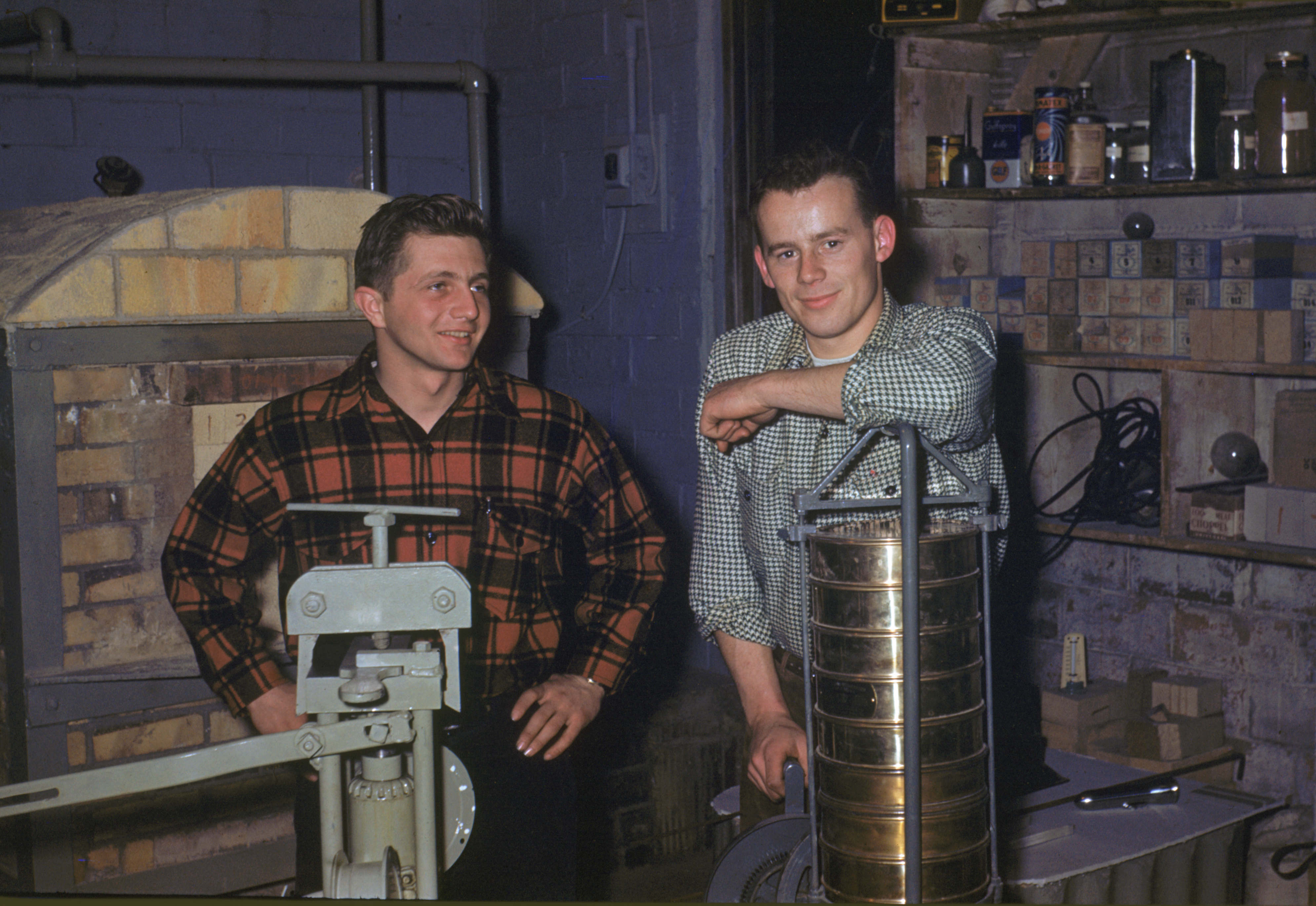
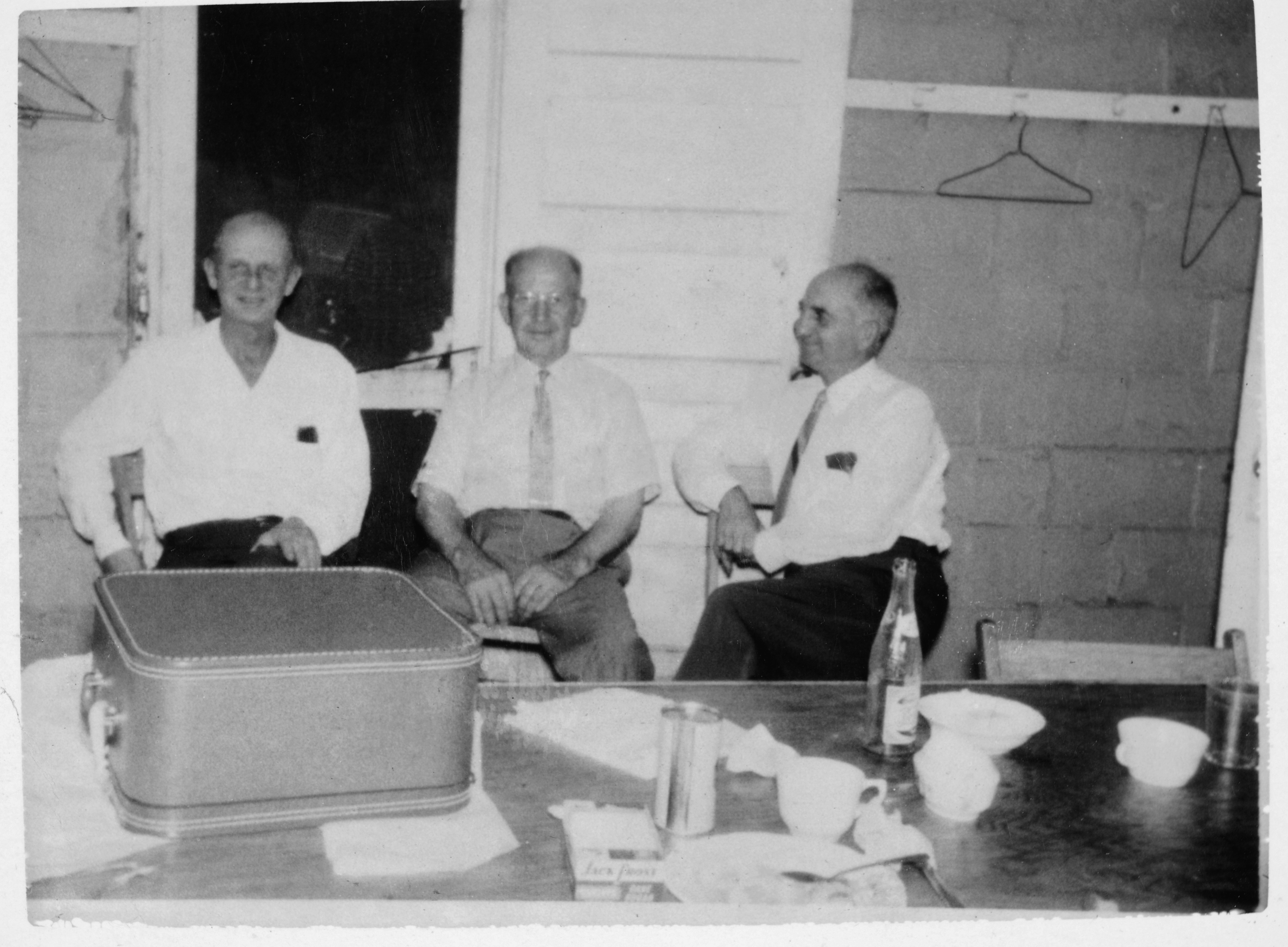
People of the Post War Years
During this period, Ed Stedman joined the company to sell the steel plant products. Ed had been melt shop superintendent at Timken before losing his job when the president of Timken was fired. Most successful alloy steel producers kept their knowledge proprietary, so Ed had a unique knowledge of the specialty steel business. He spent the following years designing and building melt shops for other steel companies and then joined WG to sell refractory products. He was very successful and only the number of accounts that the operation could service limited the company sales.
Fred Morrow was another meaningful addition to the management. Fred served with DD as a Navy officer during the war and joined WG in the late 1940s as a face brick salesman. Fred became face brick sales manager, treasurer and director before he retired after helping manage the company through some very difficult years.
Bob Hobbler returned to the machine shop after five years’ service as an infantry first lieutenant with plenty of combat in North Africa and Italy. Bob was ready to leave for a better opportunity when I returned to work after college. I asked him to wait a few weeks and promoted him to yard foreman. Bob did this job for many years and eventually succeeded Steve Haw as steel plant products sales manager, where he did a fine job for many years.
Bill DeLuca, Chuck Hatfield, Nick Costello, Harold Hamilton and Richard Cascioli were all hourly workers who eventually assumed responsible management positions within the company.
Another man, Steve Haw, appeared in the next period. Art Estep hired Steve, a civil engineer from the University of Michigan working on a highway project going through Waynesburg, to help in the plant while I was in the Army.
Helen Bitzel came to WG as office manager. Helen had worked at Republic Steel for a friend of mine, Chuck Reiter, in production planning. The postwar years brought a high volume of transactions, due to the amount of business. Helen was a great asset to DD in getting the work done on a daily basis.
During this period and a decade before and after, James F. ‘Jim’ Murray served on the board of directors. Jim was an attorney who lived in Detroit with his wife, Mary Lou, and was a son-in-law of RE Whitacre, the first president of the Whitacre Companies.
Also active as a director was Richard C. ‘Dick’ Greer, president of the Bank of Magnolia. He formed and expressed his own opinions. My brother-in-law Sterling P. Abbey was active in this period and continued on the board until 2003. Sterling was a captain in the Corps of Engineers in World War II, with his company putting one of the bridges across the Rhine River during the Allies’ final drive of the war. After the war, Sterling was a sales executive in the fastener business. He was very helpful and supportive for many years.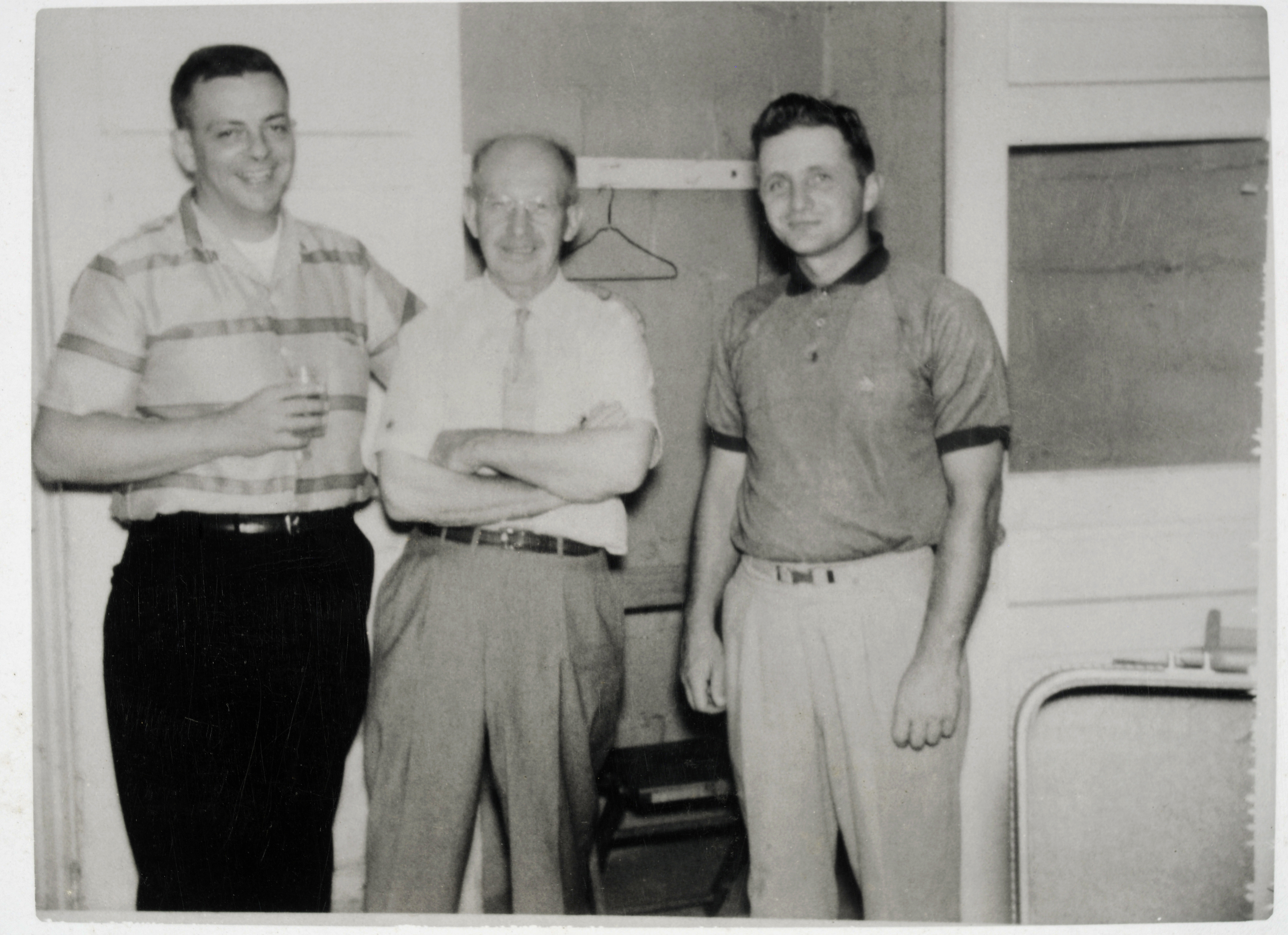
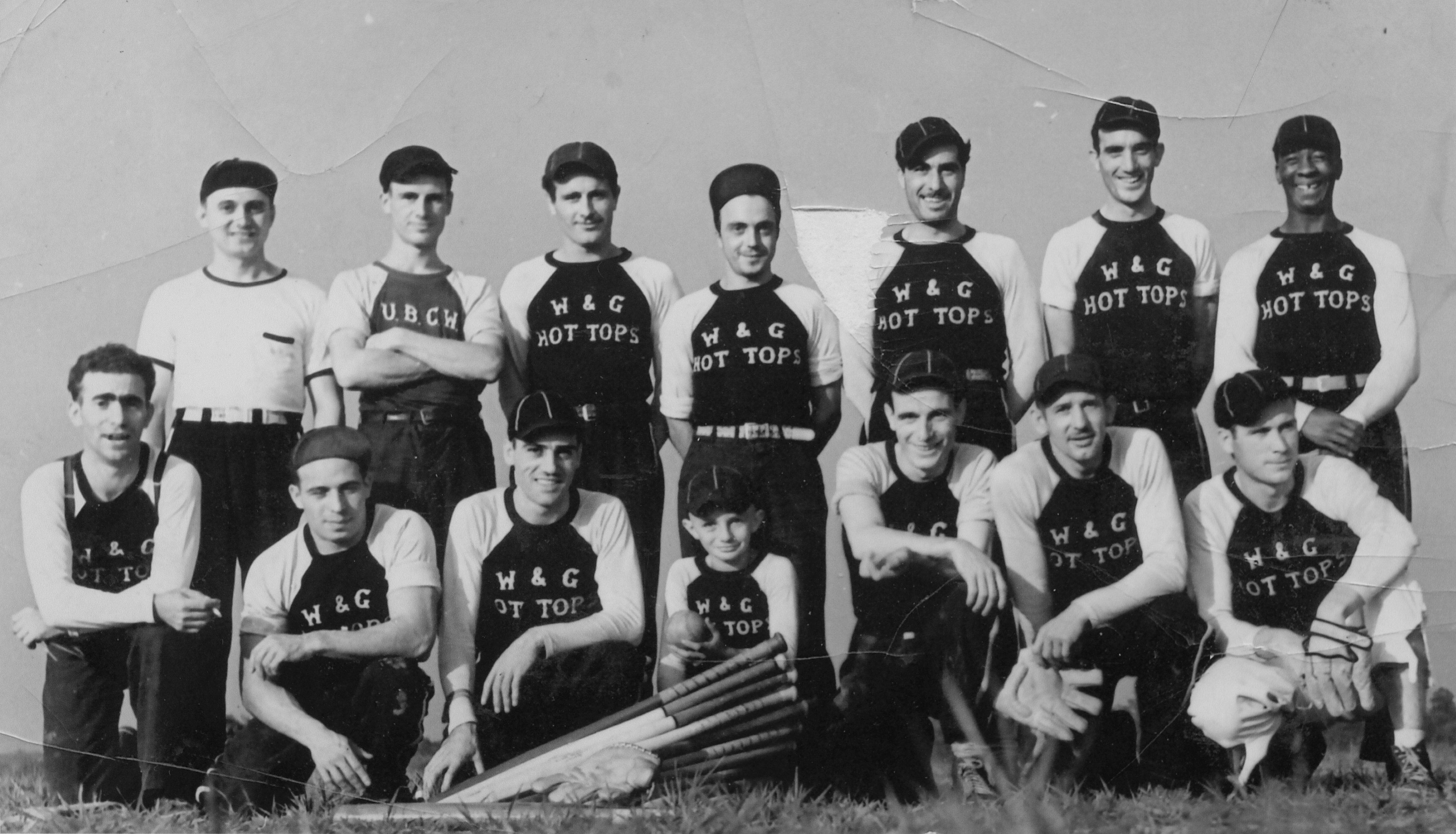
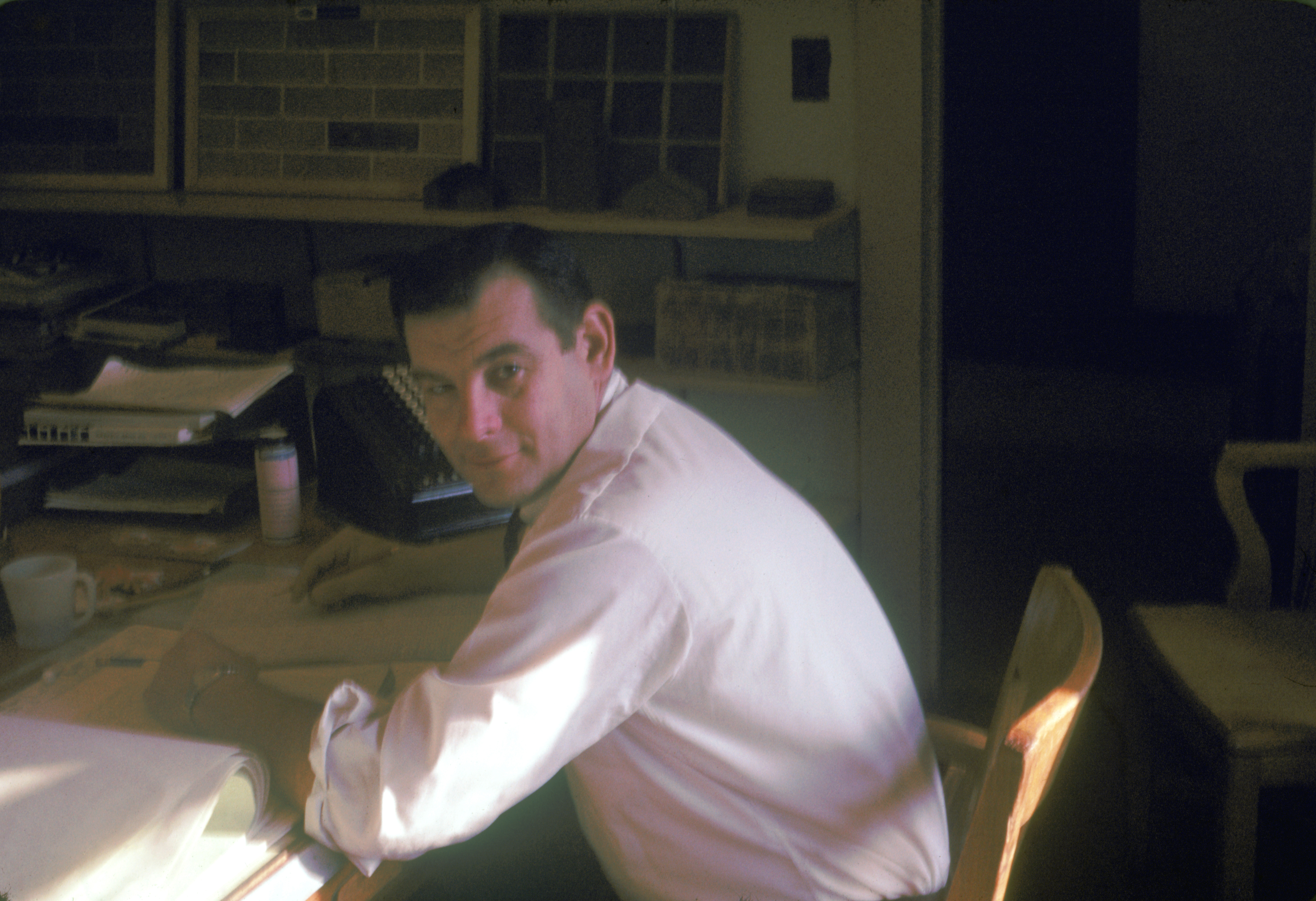
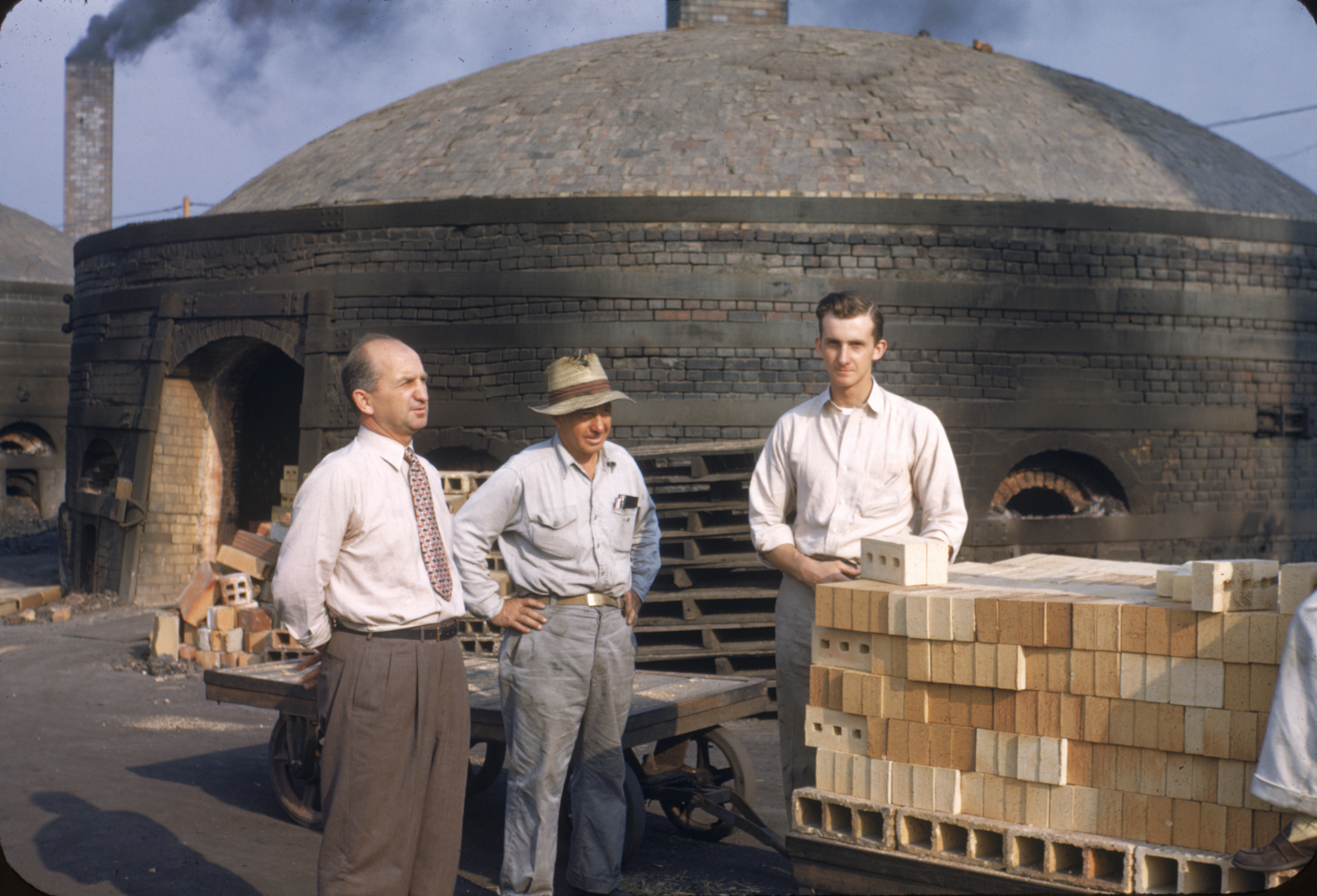
The Post War Years
In 1999, John Whitacre Jr fell from his horse breaking his wrist and fracturing his lumbar vertebra. While recovering he recorded the history of Whitacre Greer. This continues his story:
By the late 1950s, DD’s pre-stressed beam patent had expired. The licensees had obtained a new patent to keep the licensing arrangement in effect (that is, restraining competition). Finally a Baltimore producer, Wayne Hart, refused to pay the royalties and since the new patent was really not valid, the association came to an end. Art Downes was president of Whitacre Engineering Co. at the time and Art and I worked together on the Kalex matters after DD became disabled. Art was a civil engineering graduate of Ohio State, where he and his brother George were outstanding wrestlers. George was on an Olympic team and my college coach, Claude Sharer, said Art was the best practitioner of the ‘double wrist lock’ he had ever seen. Art had an instructive saying, “Work habits come down to two issues, hot air and elbow grease.” Whitacre Engineering, under Downes’ leadership, purchased the original JJ fireproofing plant from the National Fireproofing Co. and in 1999, supplied the reinforcing steel for the new Cleveland Browns football stadium.
Many servicemen came back to their jobs at Whitacre-Greer after the war with greatly enhanced skills and leadership ability, due to military service. As older supervisory and management people retired, the replacements generally had more knowledge, skill and energy. The postwar years of this period resulted in improving, although not great, profits.
The War Years
On September 1, 1939 Germany, under Hitler, invaded Poland. England and France had agreements to support Poland and joined the war. By 1940, Hitler had conquered Europe and the battle of Britain was on. On December 7, 1941, Japan attacked Pearl Harbor and the U. S. declared war on Japan and Germany. America’s industrial machine moved rapidly out of the Great Depression. Steel production went to capacity and beyond to supply metal for tanks, aircraft, ships, trucks and weapons. Whitacre-Greer’s participation as a supplier of clay refractory products expanded. The magnolia plant reopened to produce hot tops. Ladle brick, mold plugs and Bessemer converter tile were additional products produced. The company more than did its part supplying materials essential to the war effort and all involved could be proud of their work during the war years.
After World War II, the Magnolia plant was converted to make face brick. A monumental shortage of this product was created by the five-year moratorium on building and house construction during the war. Work began to restore the P & M plant at Malvern. As the P & M plant was about to start, the Magnolia factory burned down. JB and Art didn’t want to borrow money to finish both plants and decided to cannibalize the machinery from the P & M and rebuild Magnolia. The P & M never started again. During the rush to build houses after World War II, a severe freight shortage developed. WG presented the 1922 “cease and desist” order against discrimination to the Tuscarawas branch to the Pennsylvania Railroad. Within days, 30 cars were backed up on the Magnolia factory siding and double-shift loading crews were organized to get the brick loaded promptly.
Whitacre Greer’s History Continues – Founder JJ Whitacre Passes
JJ remained mentally active, learning the French language after age 70. He subscribed to a Paris newspaper and read many books written in French. His personal library was extensive. Among his books, I found an early volume extolling the virtues of various vitamins in one’s diet. In 1938, JJ had a stroke and died in Miami. His property, including WG stock, was divided equally among his children. Apparently, it was his intent that his oldest son, JB, have voting control over the other children’s common stock for 25 years. There was some confusion here, according to Art Estep, as part of the will was missing. DD, Kate and JB signed an agreement that JB would control the vote of the stock for 25 years or until 1963, when we will revisit the subject. From 1938 to 1963, JB was president, DD vice president and Art Estep secretary-treasurer.
Polo and Ponies – The History of WG Continues
John’s story continues:
DD’s wife, Eddy, died tragically of a tubular pregnancy in 1933. DD remarried to his second wife, Joan. Bette and Dan commuted to Worley grade school in Canton. DD was a good and active polo player. There was a polo field as well as a nine-hole golf course between Waynesburg and Magnolia. My mother, Augusta, was riding Pete, DD’s favorite polo mount, back to the mule barn after a polo game when tragically, a drunk driver hit her. Augusta’s leg was severely broken and Pete perished in the crash.
Later, continuing his equestrian interests, DD formed the Waynesburg Fox Hunt and developed a pack of foxhounds. This led to some great English sport on the company property, with many find attendant social activities. DD was both master and huntsman of the fox hunt and his son Dan and I served him as whips when we were not in school.
JB and Augusta divorced in 1933. Augusta remarried Dr. George Hackett and moved to Canton. John B. Jr. and Ann lived with the Hacketts in the winter and attended Belle Stone School. They spend weekends and summers with their father in Waynesburg. JB had a pack of beagle hounds, regularly attending field trials, and raised and trained at least six field champions. He kept his children supplied with ponies and horses, as JJ had done for his children. JB was an excellent billiard player and trapshooter. During his single years, he had a billiard table at the big house. He taught me and we often played, but I could never match his skills. During my Navy service at Notre Dame, I gained some notice by winning for the Navy a key match of 38 (a combination game of pool and billiards played on a pool table) in a contest with some Marine trainees. When JB remarried in 1943, the table when back to the pool hall in Waynesburg.
The Esteps were active socially, avid golfer, had horses and rode with the hunt, and followed JJ’s example by wintering in Florida.
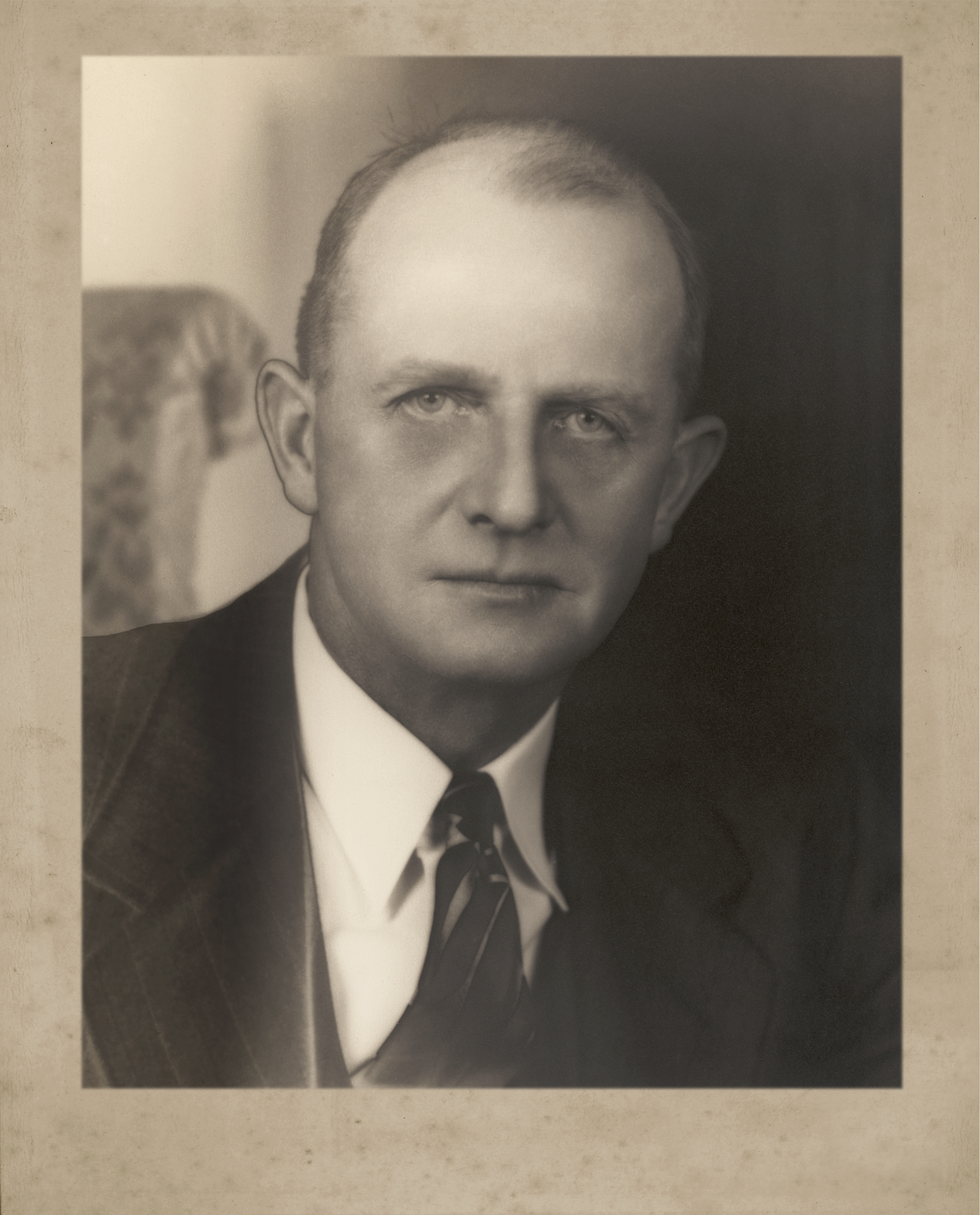
WG Patents Pre-Stressed Hollow Tile Beam
During the effort to create new business, DD invented a pre-stressed hollow tile beam known ad “Kalex,” resulting in US patent number 2,101,447. DD assigned the patent jointly to WG, Whitacre Engineering and Balast Rock, a California company. During this period, DD worked for Whitacre Engineering Company for some years. By pre-stressing the bottom of the tile beam, it could span wide areas and the floors would hold greatly increased loads. The invention attracted the attention of the cement and concrete interests, which hired Professor Vander Heyden at the University of Wisconsin to develop and patent such a system using concrete blocks rather than clay tile. Vader Heyden’s work resulted in US patent number 2,696,729, which was assigned to the concrete block sponsors of the research. The Whitacre interests successfully sued the concrete interests in federal court in Indiana. The court essentially ruled that Vander Heyden et al. had “stolen” the intellectual property of the basic DD invention and the court awarded ownership of the Vander Heyden patent to the Whitacre interests. For the next 25 years, our companies collected substantial royalties from manufacturers whom we licensed to make “Dox” block beams out of cement block. We will revisit this subject in 25 years.


